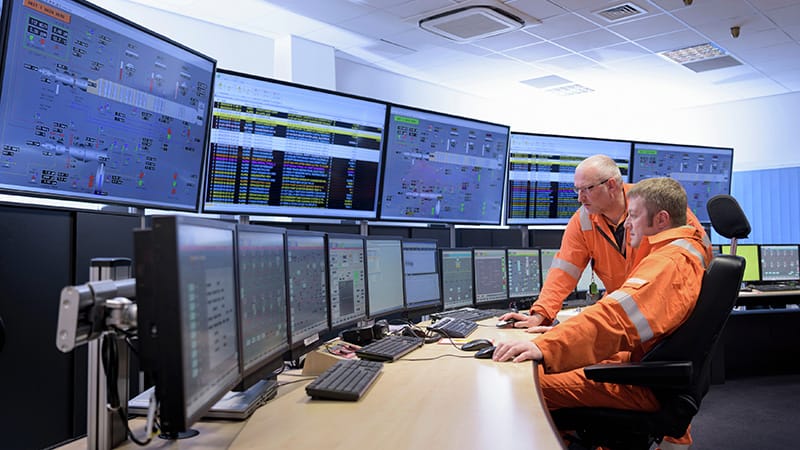
Video Walls & Process Control
Why Are Video Walls Becoming Essential in Process Control?
- To handle the ever-growing amount of data!
- For better and quicker response times
- To improve overall efficiency and productivity
Video walls are increasingly being used in the manufacturing industry to improve productivity. These large displays allow users to visualize multiple sources of information simultaneously, enabling quicker and more informed decision-making.
Example #1 – AUTO ASSEMBLY
One example of a manufacturing company using a video wall to improve productivity is an automotive assembly plant. This plant uses a video wall to display real-time data on production lines, including the status of each machine, the number of units produced, and any maintenance or repair needs. By being able to see this information at a glance, the plant’s employees are able to coordinate their efforts more effectively and identify and address any issues that may arise.
The use of video walls in the manufacturing industry can also improve communication and collaboration among team members. By displaying information in a central location, team members can easily share and discuss data and coordination, leading to more efficient problem-solving and decision-making.
Example #2 – PHARMACEUTICAL
Another example is a pharmaceutical manufacturing facility. This facility uses a video wall to display real-time data on the production of various medications, including the status of each batch, the number of units produced, and any quality control issues that may arise. By being able to see this information in one central location, the facility’s employees are able to ensure that they are meeting production goals and maintaining the quality of their products.
So what are we really looking at?
In addition to displaying real-time data, video walls can also be used to display diagrams, maps, and other types of visual information that can help employees understand complex processes and make informed decisions. For example, a chemical manufacturing plant may use a video wall to display a flowchart of their production process, allowing employees to quickly identify any bottlenecks or inefficiencies that may be causing delays.
The Takeaway
In summary, video walls for process control can greatly improve productivity by providing a centralized location for the display of important information and facilitating better communication and collaboration among team members. Whether it’s an automotive assembly plant, a pharmaceutical manufacturing facility, or a chemical manufacturing plant, the use of a video wall can help organizations make quicker and more informed decisions, leading to improved efficiency and productivity.
The Solution
At VuWall, we are focused on improving operator efficiency in process control environments. Our TRx video wall management and AV distribution software features an easy-to-use, highly intuitive UI with drag-and-drop operations for all source-to-destination routing and visualization needs. It requires no programming to create layouts and pre-sets. TRx even features a control panel designer tool to quickly and easily create highly customizable control panels for operators to create their own visualization experiences with the touch of a button.
Learn more about VuWall solutions for Process Control Applications.
